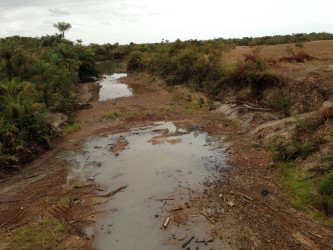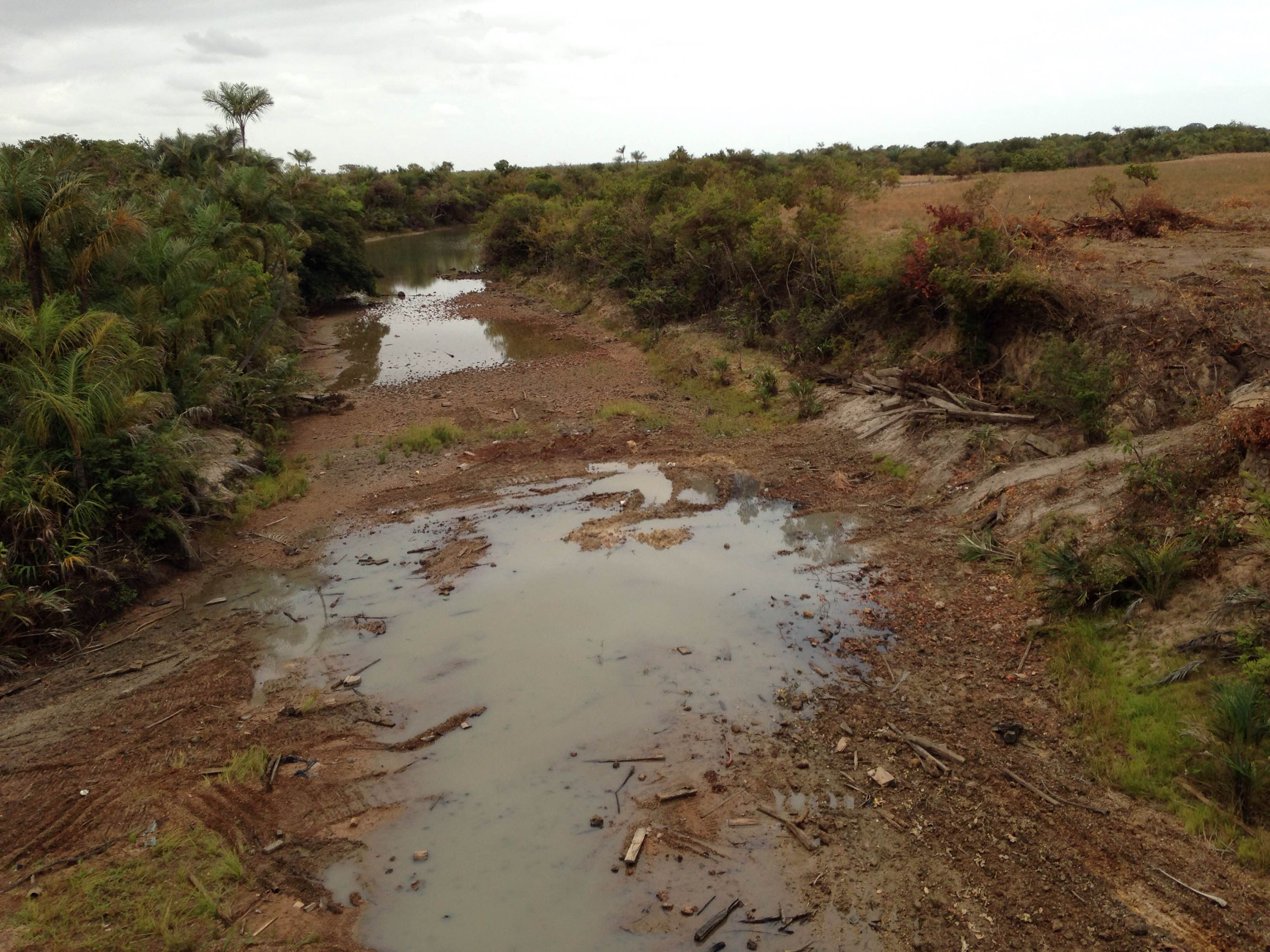Residents of the Rupununi in Region Nine continue to pray for rain as wells and other sources of water continue to disappear during what some have described as being the second worse drought to hit the region.

Starting late last year, the dry weather is due to the current El Nino weather pattern and is expected to last until the end of May.
Driving through the Georgetown to Lethem trail during a recent visit, Stabroek News encountered several areas leading to the Kurupukari Crossing, where there were ongoing forest fires. Several drivers who ply the route had even expressed their reluctance at traversing the route of fear that their fuel tanks, which are often secured on top of the vehicles, could combust as a result of heat that is given off by the fires.
Additionally, the pontoon that transports vehicles from one side to the other side of the Kurupukari Crossing now takes longer than usual as it tasked with manoeuvring around sandbanks that have become obstacles as the level of the Essequibo has since dropped.
In the savannahs, cattle was observed grazing in barren fields, while lakes and other large bodies of water had been replaced with dry and cracked earth. Even the lush, green vegetation on the mountains now appear withered and brown, while the vegetation on the lower land appeared brittle and showed signs of browning.
For residents in areas like Lethem, in Central Rupununi, they are more fortunate than others as they have experienced small amounts of rainfall and are also receiving a supply of water from the Guyana Water Incorporated (GWI), which assists in light of the hand dug wells in

